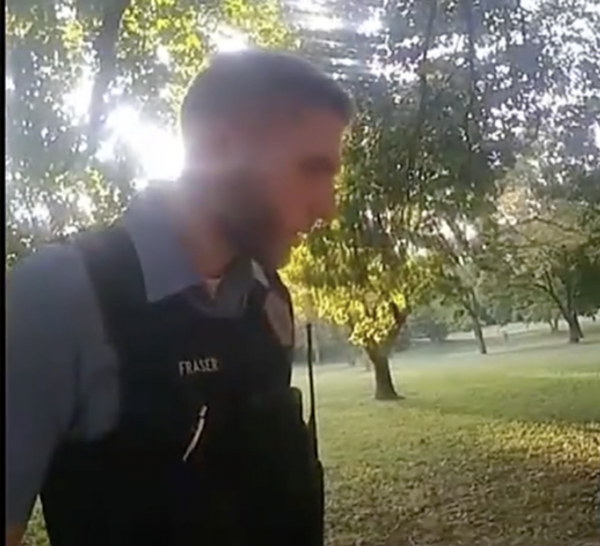
It took the Coast Salish peoples thousands of years of careful breeding to produce a dog with fur so thick it could be spun into yarn. And it took only a few decades for colonists settling in western Canada to push the Salish woolly dog to extinction.
Until recently, the only remnants of the beloved canine were believed to be a handful of woven blankets, a pelt hidden in a museum 3,000 miles away and generations of Salish oral history.
That is, until a British Columbia family noticed their deceased pet, Maggie, looked eerily similar to paintings of the dogs.
New research has shed light on the species’ disappearance, blaming colonial government policies that sought to destroy Indigenous culture, including the use of the woolly dogs. But the possibility that genetic remains of the Salish dogs have persisted in dogs like Maggie has rekindled hopes that the lost species might yet stage an unlikely return.
The Coast Salish people, whose territory spanned what is now southern British Columbia to northern Oregon state, thrived along the coastline thanks in part to an intimate knowledge of the bounty offered by the lands and waters of the region. Cedar, abalone and otter furs were used in ceremonial regalia. But it was a dog, cultivated over millennia, that produced one of the more unusual materials for their weaving.
To ensure breed purity, the dogs were kept on islets, tended by Salish women who visited by canoe, bringing food including Pacific salmon, herring and other marine mammals. The dogs were sheared with mussel shell knives.
“They were all shorn as close to the skin as sheep are in England; and so compact were their fleeces, that large portions could be lifted up by a corner without causing any separation,” Captain George Vancouver wrote in 1792, adding the fur could be “spun into yarn”.

Those yarns were then blended with plant fibres and the hairs of mountain goats for a durable material that could be easily dyed and then woven. An immense effort went into the production of the blankets, which were used for ceremonies and as a display of wealth.
By the end of the 19th century, however, the blankets – and the dogs – had disappeared. For many years, market forces were blamed; mass produced wool blankets sold by the Hudson’s Bay Company were cheaper and easier to manufacture and historians concluded they had supplanted Salish wool blankets.
But for Eliot White-Hill, an artist whose Coast Salish name is Kwulasultun, that explanation didn’t feel right. “In our culture, it’s not about cutting corners, even when it’s easier and more convenient.” He points to the strict protocol for harvesting of cedar boughs, which must be gathered before dawn to ensure the sacred aspects of tree remain intact.
“Sure, it’d be a lot more convenient if you could harvest it whenever you wanted. But doing it the right way is part of our culture,” he said. “And so it makes absolutely no sense to me that our ancestors would just get rid of the woolly dogs because it was more convenient to use something else.”


Researchers at the American Museum of Natural History in New York City and the University of Victoria have now confirmed that suspicion. Their findings, published in the journal Science last month, suggested the Salish woolly dog was pushed to extinction after colonists arrived in western Canada.
“Survival of the woolly dogs depended upon the survival of their caretakers. In addition to disease, expanding colonialism, increased cultural upheaval, displacement of Indigenous Peoples and diminished capacity to manage the breed,” the report said.
Successive colonial governments decimated Salish culture: children were sent to residential schools to strip away their language and the knowledge of key practices, including weaving; in 1884, the potlatch, a ceremony in which elaborate wool blankets and other valued items were exchanged, was prohibited by the government. The ban was only lifted in 1951.
Canada's residential schools
Over the course of 100 years, more than 150,000 Indigenous children were taken from their families to attend state-funded Christian boarding schools in an effort to forcibly assimilate them into Canadian society.
They were given new names, forcibly converted to Christianity and prohibited from speaking their native languages. Thousands died of disease, neglect and suicide; many were never returned to their families.
The last residential school closed in 1996.
Nearly three-quarters of the 130 residential schools were run by Roman Catholic missionary congregations, with others operated by the Presbyterian, Anglican and the United Church of Canada, which is today the largest Protestant denomination in the country.
In 2015, a historic Truth and Reconciliation Commission concluded that the residential school system amounted to a policy of cultural genocide.
Survivor testimony made it clear that sexual, emotional and physical abuse were rife at the schools. And the trauma suffered by students was often passed down to younger generations – a reality magnified by systemic inequities that persist across the country.
Dozens of First Nations do not have access to drinking water, and racism against Indigenous people is rampant within the healthcare system. Indigenous people are overrepresented in federal prisons and Indigenous women are killed at a rate far higher than other groups.
The commissioners identified 20 unmarked gravesites at former residential schools, but they also warned that more unidentified gravesites were yet to be found across the country.
And Salish elders recall the Royal Canadian Mounted Police and Indian agents seizing the dogs during a dark period that helped define the relationship between police and communities across the country.
Even though anthropologists believe the species was largely extinct by 1859, reports of dogs bearing a striking resemblance to Salish woolly dogs persisted until the 1940s.
When Cecilia Porter adopted a dog in the early 2000s, all she was told was that it came from a First Nations community on northern Vancouver Island.

At the time she was studying anthropology at the University of Victoria and noticed that her dog, Maggie, looked similar to dogs on the cover of a textbook. After completing her master’s degree in Arctic archaeology, she returned to the island for archeological work and repeatedly saw the dog in research articles and old photographs.
“I just keep thinking, you know, my dog comes from the right place. And she has all the right characteristics,” she said.
Porter, now a doctoral candidate in archeology, believes genetic elements of the woolly dog likely persisted for generations, explaining Maggie’s distinct coat, colouring and facial structure.
“I’m an analytical person. While I don’t have a really strong, defensible archaeological leg to stand on to say she is for sure a woolly dog, so many of her traits are in line with a type of dog that we know existed,” she said. Maggie died from an aggressive cancer in 2020, before Porter could test her DNA. But a match would still have been unlikely: woolly dogs aren’t found in commonly used databases.
For White-Hill, the possibility that vestigial elements of the woolly dog have survived in modern pets represents a chance to reclaim at least one element of the culture of the Coast Salish people.
“Despite the best efforts of the colonial project to get rid of our people, and our practices, we’re still here. Our culture is still here. And we still carry the teachings of our ancestors,” he said.
In recent years, there has been talk of reviving both the species and the weaving techniques that used dog hair, said White-Hill, who is working on a children’s book about furry canines.
“It’s not like Jurassic Park,” he cautioned.
“As Coast Salish people, we have the right to say that a dog breed is the Salish woolly dog. Even if the genetic material is lost, we could do selective breeding from other dogs, because there are similar breeds that still exist,” he said. “To come together as a people and say that this breed would be the Salish woolly, that’s really powerful. To restore something that was absolutely gone from our culture – that would make our ancestors proud.”







